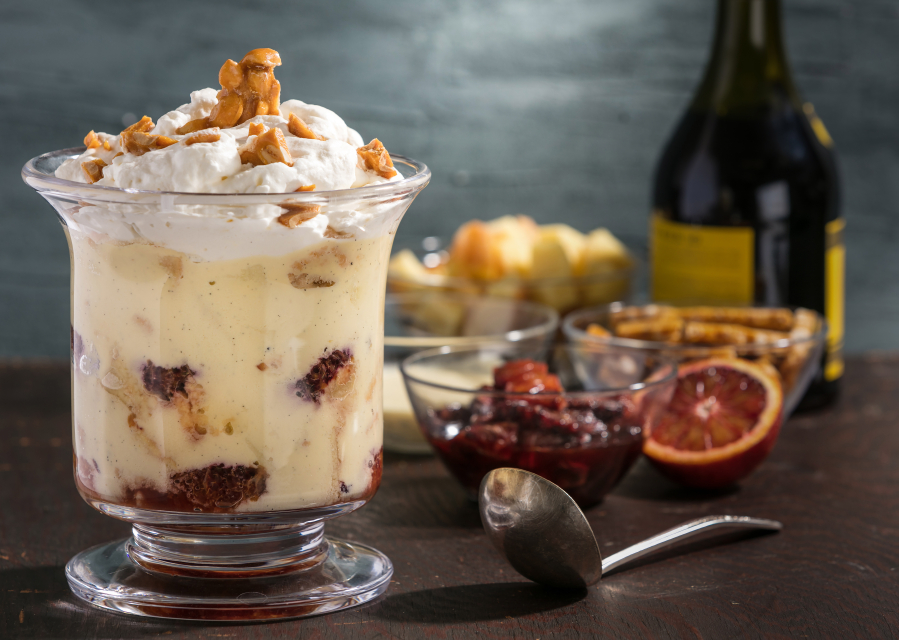Yes, we’ve had a jolly good time. Let’s make our resolutions tomorrow and, meanwhile, reimagine the remains of desserts today. Surely there will be an invitation to watch the game, hear vacation stories or head out for a long walk; each can provide the occasion for a sweet hurrah, bound by a single rule: no shopping for ingredients.
Such a dessert could be called a countertop-sweeper, but it’s more formally known as a trifle: one of those Great British recipes with an evocative name, joining the ranks of the Eton mess, the fool and the stargazey pie.
Turns out, there’s something similar on this side of the pond. Across America’s South, there is tipsy cake. Like a trifle, it contains fruit or jam, booze, custard and some kind of cake. According to Stella Parks, author of the upcoming “BraveTart: Iconic American Desserts” (W.W. Norton, fall 2017): “Tipsy cakes are very casual. They are not even layered — just dump the cake in the bowl.” But unlike trifles, she says, original tipsy cakes of the mid-1800s were always finished with blanched, slivered almonds.
A tipsy trifle — a mash-up of the two — was my goal. But which kind of cake to start with? This year, I had pound cake, but I gave serious consideration to using a plateful of pistachio snowball cookies. Any sponge cake, pound cake or panettone will do, even better when the cake’s a little stale. It is cubed and then sprinkled — never soaked or doused — with a combination of brandy and sweet wine or sherry. If the wine is dry and not sweet, “just add a spoonful of sugar,” Parks says.



